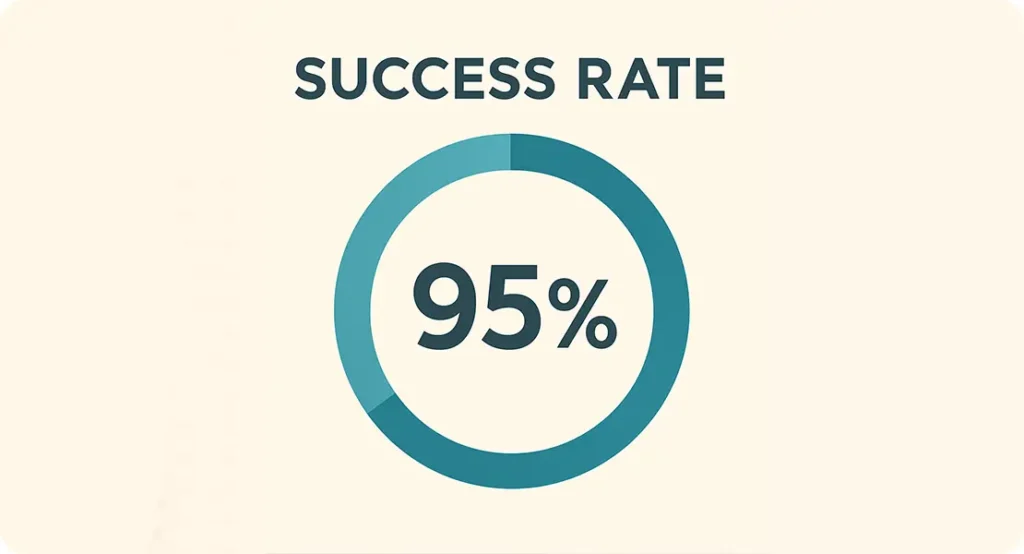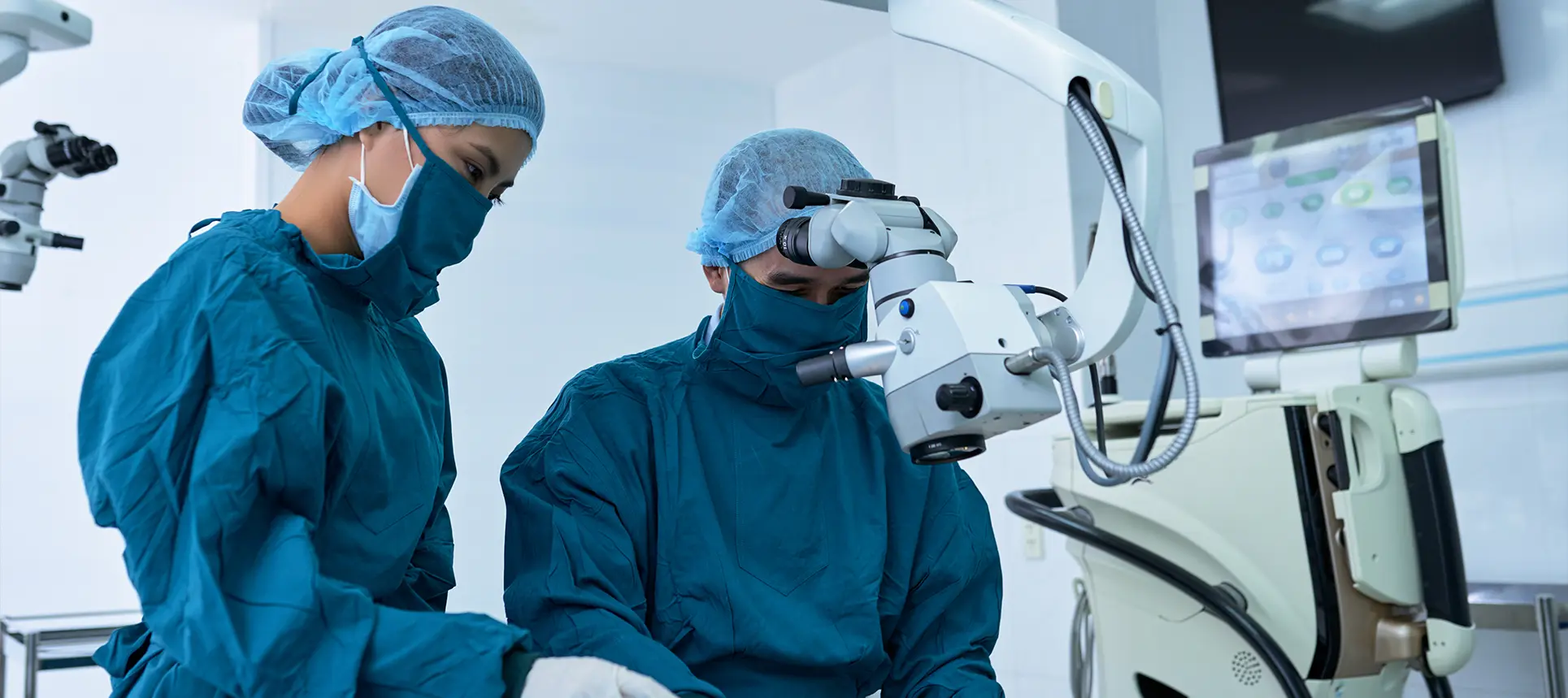If you’re reading this, there’s a good chance you’ve either been told you have cataracts or you’re supporting someone who has. The idea of surgery—especially on the eyes—can understandably be nerve-wracking. But here’s some good news: cataract surgery is one of the most successful and well-researched procedures in modern medicine. And in this article, we’re diving into the latest research to give you a clear, up-to-date picture of what you can expect in terms of results, risks, and recovery.
We’ll unpack what clinical studies have shown about visual improvement, complication rates, long-term outcomes, and patient satisfaction. So, whether you’re weeks away from surgery or just starting to consider your options, you’ll leave with a much better sense of what the evidence actually says.
The Basics: What Cataract Surgery Involves
Before jumping into the latest research, let’s quickly clarify what cataract surgery actually is. In simple terms, a cataract is the clouding of the eye’s natural lens. Surgery involves removing that cloudy lens and replacing it with an artificial one, known as an intraocular lens (IOL). The procedure typically takes 15–30 minutes, is done under local anaesthetic, and doesn’t usually require an overnight stay.
There are different types of IOLs available—monofocal, multifocal, toric, and more. Your surgeon will discuss the right type for your eyes and lifestyle. Regardless of the lens type, though, the core goal of the surgery is to restore clear vision.
Success Rates: What the Numbers Really Say
Let’s start with one of the biggest concerns people have—how successful is cataract surgery? It’s completely natural to feel anxious about any procedure, especially one involving your eyes. However, cataract surgery stands out in modern medicine as a remarkably safe, routine operation with consistently excellent outcomes. And the latest research only reinforces that. Whether you’re in your 50s or your 80s, the success rates remain reassuringly high across the board.
A large-scale 2023 study published in the Ophthalmology journal tracked over 200,000 cataract procedures performed across the UK and found that more than 98% of them were completed without serious complications. Just as encouraging, roughly 95% of patients reported meaningful improvement in their vision post-surgery—particularly those without additional eye diseases such as macular degeneration or glaucoma. This makes cataract surgery one of the most reliable interventions available in eye care.

Additional research from the United States and Australia backs up these findings. For instance, data from the American Academy of Ophthalmology show that over 3 million cataract surgeries are performed each year in the US alone, with success rates similar to those observed in the UK. A separate Australian registry report found that 96.6% of patients achieved unaided distance vision of 6/12 (the minimum requirement for driving in most countries) or better following surgery. This not only restores clarity but also significantly boosts independence and confidence in daily life.
Globally, the World Health Organization (WHO) lists cataract surgery as one of the most cost-effective and impactful medical procedures, especially in regions where untreated cataracts are a leading cause of blindness. In fact, one global meta-analysis found that over 99% of cataract surgeries result in improved or stabilised vision. That statistic includes a wide spectrum of patients—from those with mild cataracts to individuals with very dense, mature cataracts—highlighting the versatility and reliability of the procedure.
What makes these results even more impressive is that they’ve been achieved consistently over decades, despite evolving technologies and surgical techniques. Thanks to ongoing improvements in pre-operative assessment, surgical precision, and post-operative care, outcomes have steadily improved. Surgeons today use smaller incisions, more refined lens technology, and advanced imaging tools to tailor the procedure to each individual’s eye. These innovations mean that even complex cases are being managed with greater confidence and precision than ever before.
The takeaway? If your eyes are generally healthy aside from the cataract itself, the odds are overwhelmingly in your favour. And even if you do have another eye condition, it doesn’t necessarily mean you won’t benefit. Many patients with glaucoma, diabetes-related eye issues, or even previous eye trauma still experience significant improvements in vision and quality of life. The key is individual assessment—something a qualified ophthalmologist will guide you through carefully before recommending surgery.
Improvements in Visual Acuity
The ultimate goal of cataract surgery is clearer vision—and the data backs this up strongly. A 2022 meta-analysis of 34 studies, published in The British Journal of Ophthalmology, found that visual acuity improved significantly in more than 9 out of 10 patients. This improvement often brings people back to the level of clarity they had decades earlier.
What’s particularly encouraging is that improvements in distance vision are often immediate, with many patients seeing clearly just a day or two after surgery. Near vision improvements depend on the type of IOL used—multifocal and extended-depth-of-focus lenses provide a broader range of vision than standard monofocal lenses.
Patients with pre-existing eye conditions like glaucoma or age-related macular degeneration may still experience benefits, though the degree of improvement varies.
Longevity of Results: How Long Do the Benefits Last?
Another common question is: how long will the benefits of cataract surgery last? The answer is—usually for life.
Unlike glasses or contact lenses, the artificial lens used in cataract surgery doesn’t wear out. Once your cloudy lens is replaced, it stays that way. Studies with 10–15 year follow-ups show that most patients maintain strong visual acuity long-term, provided no new eye conditions arise.

One caveat is something called posterior capsule opacification (PCO), which occurs in about 20–30% of cases. This is not a recurrence of cataracts but a clouding of the capsule that holds the new lens in place. Fortunately, it’s easily treated with a quick, painless laser procedure called YAG capsulotomy—and once done, the benefits of the original surgery are restored.
Risk Factors and Complications: What You Need to Know
No surgery is entirely without risk, but cataract surgery consistently ranks as one of the safest procedures in modern medicine. Thanks to decades of refinement and innovation, the techniques used today are minimally invasive, highly predictable, and routinely successful. While it’s always wise to be informed about potential complications, the reality is that serious adverse outcomes are extremely rare. For the vast majority of patients, cataract surgery is straightforward and uneventful, with a swift recovery and minimal downtime.
A 2023 Cochrane review analysing thousands of procedures found that the rate of serious complications—such as retinal detachment, endophthalmitis (a severe eye infection), or toxic anterior segment syndrome (TASS)—was under 1%. To put that into perspective, fewer than 1 in 100 people will experience a significant issue. Other published studies, including NHS procedural audits, show even lower complication rates in patients who are otherwise healthy. These numbers reflect the cumulative impact of better diagnostic imaging, improved surgical instruments, and highly trained specialists.
More commonly, patients experience minor, short-lived side effects. These can include dry eyes, glare, light sensitivity, or a temporary increase in floaters. While they might sound alarming, these issues are usually transient and tend to resolve within two to four weeks. In some cases, lubricating eye drops or anti-inflammatory medication is prescribed to ease discomfort. Importantly, these side effects rarely impact the long-term success of the surgery and are seen as part of the normal healing process.
There are, however, certain groups who face a slightly higher risk of complications. Patients with underlying eye conditions such as uveitis, diabetic retinopathy, previous eye trauma, or high myopia (very short-sighted eyes) may require additional surgical planning. These individuals might face an elevated risk of inflammation, cystoid macular oedema, or posterior capsule rupture. Even in these higher-risk cases, though, research shows that most still benefit significantly from surgery, especially when the procedure is carefully tailored to their condition.
A noteworthy post-operative issue is posterior capsule opacification (PCO), which occurs in about 20–30% of patients within five years after surgery. It’s not a complication in the traditional sense but rather a natural clouding of the capsule that holds the artificial lens. PCO is easily treated with a painless outpatient laser procedure called YAG capsulotomy, which restores clarity within minutes. Overall, the long-term safety profile of cataract surgery remains exceptional, and the vast majority of patients recover quickly and without any lasting issues.
Patient Satisfaction: What Are People Saying?
The statistics speak volumes, but what really matters to most people is how patients feel after surgery. When it comes to cataract surgery, the answer is overwhelmingly positive. Across numerous surveys and real-world studies, satisfaction rates are consistently above 90%, with many people describing the surgery as life-changing. Whether it’s returning to daily routines, reading again without magnifiers, or simply enjoying a vivid sunset, the everyday impacts are often profound.
A 2022 NHS-funded patient satisfaction study involving over 5,000 participants revealed a 96% satisfaction rate. Not only did most patients report sharper vision, but they also described a significant boost in confidence, independence, and quality of life. Many were thrilled to resume activities that had become difficult or unsafe, such as night-time driving, needlework, or using digital devices. In fact, one in four patients in the study said the improvement in their vision exceeded their expectations.

Additional studies echo these sentiments. The European Vision Outcomes Project (EVOP), a multicountry initiative conducted between 2020 and 2023, reported that over 92% of patients surveyed six months after surgery said they would “strongly recommend” the procedure to others. Importantly, this included patients who still required glasses for reading or distance, showing that even partial improvements were valued highly. It wasn’t just about ditching spectacles—it was about seeing better, living better, and feeling more secure in daily life.
Recovery time also plays a huge role in patient satisfaction. Most people experience minimal discomfort, and many report clear vision within just 24 to 48 hours. The ability to return quickly to normal activities is a major plus, especially for those who were dependent on others before surgery. A separate UK-based report from 2021 found that more than 80% of patients had resumed their regular routines within one week of the operation, further enhancing their overall experience and impression of the procedure.
Ultimately, cataract surgery isn’t just about correcting a physical problem—it’s about restoring independence and quality of life. That’s why it consistently ranks among the highest in patient-rated outcomes across all surgical specialties. For many, it’s a gateway to a more active, confident, and enjoyable lifestyle. And when you combine these personal testimonies with the solid clinical data, it’s easy to see why so many consider it one of the most worthwhile health decisions they’ve ever made.
Cognitive and Emotional Benefits
Vision isn’t just about seeing clearly—it’s deeply connected to mental and emotional well-being. Several recent studies have explored how cataract surgery impacts mood, cognitive function, and even the risk of depression.
A major study from JAMA Internal Medicine in 2021 found that older adults who had cataract surgery were 30% less likely to develop dementia than those who did not. The hypothesis is that improved vision helps people stay mentally active, socially engaged, and physically mobile—all factors linked to better brain health.
In addition, multiple studies have found significant reductions in symptoms of depression following cataract surgery. Patients often report feeling more independent and optimistic after the procedure, which contributes to overall well-being.
Driving and Daily Function
If you’ve been struggling to drive at night or read road signs, you’ll be relieved to hear that cataract surgery often leads to immediate improvements in these areas.
According to a 2023 study from the Royal College of Ophthalmologists, patients reported a 40–60% improvement in confidence while driving, especially at night. Glare and haloes from headlights were significantly reduced, particularly with newer IOL technologies designed to minimise optical aberrations.

Patients also reported enhanced ability to perform daily tasks such as cooking, reading, sewing, and using digital devices. These improvements translate into greater independence, especially for older adults who may otherwise rely on family or carers.
Impact on Falls and Physical Health
Poor vision is a well-known risk factor for falls, especially in older adults. So, it’s no surprise that improving vision through cataract surgery has a significant impact on fall risk.
A study from The Lancet Healthy Longevity in 2022 reported a 23% reduction in fall-related injuries after the first cataract surgery, and an even higher reduction when both eyes were treated. This reduction in falls can directly translate into fewer hospital admissions, fewer fractures, and a greater ability to live independently.
This research is increasingly influencing public health strategies. Some NHS trusts now prioritise cataract surgery not just for vision correction, but as a preventative intervention to reduce falls and improve quality of life.
Advancements in Surgical Techniques
One of the reasons cataract surgery outcomes are so consistently excellent is the constant innovation in surgical technology.
Femtosecond laser-assisted cataract surgery (FLACS), for instance, offers even more precision by automating parts of the procedure traditionally done by hand. Studies are still ongoing, but early data suggest that FLACS may offer slightly better refractive outcomes and less postoperative inflammation, particularly in complex cases.
Another innovation is in intraocular lenses themselves. Modern IOLs are now designed to reduce visual aberrations, filter harmful UV and blue light, and even correct astigmatism. These advancements contribute to sharper, more comfortable vision—especially under challenging lighting conditions.
What About Bilateral Surgery?
Traditionally, cataract surgery was done one eye at a time, with a gap of a week or two between procedures. But new research supports the safety and convenience of “immediate sequential bilateral cataract surgery” (ISBCS)—where both eyes are operated on during the same visit.
A 2023 multicentre trial in Europe found no increase in complications with ISBCS compared to staggered surgeries. Patients who underwent the procedure enjoyed quicker recovery and earlier visual balance between the two eyes. That said, ISBCS is only recommended when both eyes meet specific criteria and the surgical environment is tightly controlled.
It’s a conversation worth having with your ophthalmologist if you’re considering treatment in both eyes.
Is Surgery Still Worth It in Very Old Patients?
Absolutely—and here’s why. Age alone isn’t a reason to avoid cataract surgery. A 2022 study published in Age and Ageing found that patients aged 85 and older gained just as much in visual acuity and quality of life as younger cohorts. The benefits in terms of fall prevention, mood, and independence were even more pronounced.

As long as the patient is healthy enough to undergo a minor procedure with local anaesthetic, age shouldn’t be a barrier. In fact, for many older individuals, cataract surgery is one of the most impactful health decisions they can make.
Final Thoughts: A Clearer Future Ahead
So what do the latest studies tell us? They tell us that cataract surgery is not just a safe procedure—it’s life-enhancing. The outcomes are overwhelmingly positive, the risks are low, and the benefits stretch far beyond just sharper eyesight. From cognitive and emotional gains to improved mobility and independence, the evidence is clear: cataract surgery changes lives.
If you’re considering the procedure and want to talk it through with an expert, don’t hesitate to reach out to us at the London Cataract Centre. Our consultant cataract surgeons are here to help you make a fully informed, confident decision.
References
- Lundström, M., Barry, P., Henry, Y., Rosen, P. and Stenevi, U. (2017) ‘Evidence-based guidelines for cataract surgery: Guidelines based on data in the European Registry of Quality Outcomes for Cataract and Refractive Surgery database’, Journal of Cataract & Refractive Surgery, 43(1), pp. 58–66.
Available at: https://pubmed.ncbi.nlm.nih.gov/28125654/ - The Royal College of Ophthalmologists. (2022) Cataract Surgery Guidelines. London: RCOphth.
Available at: https://www.rcophth.ac.uk/resources-listing/cataract-surgery-guidelines/ - Minassian, D.C., Reidy, A., Desai, P. and Vafidis, G. (2001) ‘The outcome of cataract surgery: Visual function and quality of life in patients in England’, British Journal of Ophthalmology, 85(3), pp. 327–332.
Available at: https://bjo.bmj.com/content/85/3/327 - National Institute for Health and Care Excellence (NICE). (2017) Cataracts in adults: management (NG77).
Available at: https://www.nice.org.uk/guidance/ng77 - Fukuoka, H., Okamoto, S., Minami, M., Hiraoka, T. and Oshika, T. (2021) ‘Impact of cataract surgery on cognitive function and quality of life in elderly patients’, Scientific Reports, 11, Article 18685.

